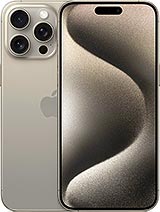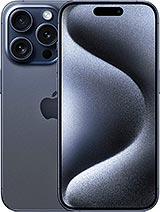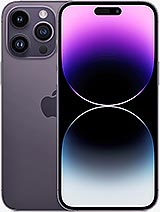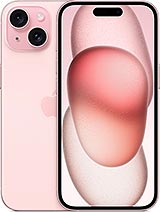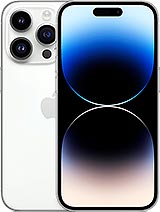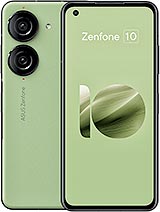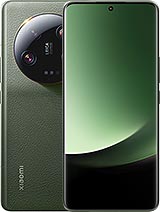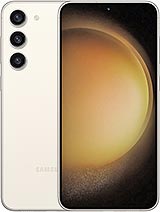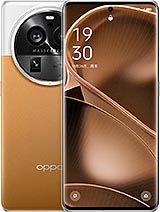Apple iPhone 15 Pro review

Apple iOS 17
All new iPhones come with Apple's iOS 17 out of the box. The new iOS version is the most insignificant update ever, no matter what Apple may try to sell you. It brings a new Standby mode, highly customizable Contact Posters, Password sharing with friends, offline maps in Maps, updated Messages with automatic SMS code deletion, and interactive widgets - to name a few of the changes and to give you an idea of their magnitude.

We talked at length about iOS 17 when we reviewed the iPhone 15 Pro Max, and we'd invite you to check out the software section of that review - things are essentially the same on the 15 Pro non-Max.
Connectivity - USB-C, finally
We also mentioned the newly-introduced USB-C port's capabilities for video output in the Pro Max's review, but we feel that the move away from Lightning is such a big deal that we're including the following paragraph here anyway.

The new USB-C port on the iPhone 15 Pros adheres to the USB 3.0 standard and supports up to 10Gbps transfer speeds - compare that to the USB 2.0-compliant vanilla iPhone 15s and their 480Mbps data transfer cap.
Video output is supported as well (Display port DP) via Type-C Alt mode, which means that most standard Type-C hubs with a video interface should be able to get an image from the phone. By default, you get a mirror of the display without any other fancy options like a dedicated desktop mode or anything of the sort. In other words, it does a simple screen mirror for the UI.
In terms of resolution, the iPhone appears to be outputting in 4K (2160p) or at least near that, but in a 19.5:9 aspect ratio to match the phone's display - the TVs we connected it to, reported a 2160p signal.
However, certain apps behave differently; some, like the Photos app and Netflix, offer dedicated casting of content to the display in a 16:9 aspect ratio. Other video apps, like YouTube, however, don't have said dedicated video casting behavior and are stuck at 19.5:9 aspect ratio and 4K resolution, leaving the image both letter-boxed and pillar-boxed. There is seemingly no way to control this behavior, and it is a bit of an inconsistent mess.
The iPhone does offer some display settings when connected to an external display, mainly dealing with the selection of HDR or SDR color mode where supported, as well as a toggle for the ability to automatically adapt and match the output resolution to the content being played.

All iPhone 15 models also support USB Host mode, and we successfully hooked up a mouse and keyboard. The keyboard started working instantly, but getting the mouse to pick up and actually show an on-screen cursor required enabling the Assistive Touch option in Settings. USB thumb drives, card readers, and hard drives work fine and automatically mount and appear in the Files app. Compatible external storage is also recognized by the Camera app, and you can output ProRes videos there.
Various USB-C game controller/phone holders are supported, too. Anything that works on Android via USB-C should work on the new iPhones as hassle-free.
Performance, benchmarks, stress tests
The iPhone 15 Pro and Pro Max are powered by Apple's latest invention - the Apple A17 Pro chipset. The Bionic moniker is no more, as this new piece of silicon brings the iPhone models to a whole new level with console-grade graphics and hardware ray tracing acceleration - Apple's marketing speak, of course.

The new Apple A17 Pro chipset is the first ever mass-market SoC manufactured by TSMC on a 3nm process node, and it contains 19 billion transistors. The CPU still has a 6-core architecture with 2 performance cores clocked at 3.78GHz and 4 efficiency cores working at 2.02GHz. Apple claims the performance cores are 10% faster than those in the A16 Bionic, and that's easy to believe, seeing how their clock speed is 10% higher too.
The GPU is a 6-core unit, which Apple claims is 20% faster than its predecessor in peak performance. It enables hardware-accelerated Ray Tracing, which is supposedly 4 times faster than the software-based Ray Tracing on last year's chip. This means the GPU won't offer that much, if any, performance bump over the last year 5-core GPU, but it will make the raytracing toll on the hardware way lighter (and thus better graphics).

Apple has such confidence in this GPU that it has made sure it has console games soon after launch. Apple has secured Resident Evil Village, Resident Evil 4 Remake, and Assassin's Creed Mirage (the latest AC title!) ports for the iPhone 15 Pro - these will come in early 2024.
There is no denying that these games will be optimized for the new iPhones and will work well. Furthermore, it is quite exciting to see popular recent console titles coming to iOS.
The Neural Engine is a 16-core unit that Apple says is twice as fast as last year's chip for machine learning operations.
The A17 Pro SoC features a Display Engine with hardware AV1 decoding and a ProRes codec. The chip allows the new iPhone 15 Pro models to capture 4k 60fps in ProRes RAW, along with support for the industry standard ACES color profile.
Finally, the new Pro models feature 8GB LPDDR5 RAM. The small-size Pro starts at 128GB of storage, which rubs us the wrong way - at that price point and with a Pro in the name, 256GB should have been the base storage, as is the case on the Pro Max. 256GB, 512GB and 1TB NVMe storage options are also available.
On the iPhone 15 Pro we're getting the same results for CPU performance in GeekBench that we did on the 15 Pro Max, which wasn't our experience with the previous generation. So, in a way, the 15 Pro is more of a step up from the 14 Pro than the Max is - 17% in the single-core test and 13% in the multi-core (those numbers are 10% and 6% when comparing the 15 Pro Max and the 14 Pro Max).
In 3DMark we got the same 10% generational improvement here that we did with the Maxes in the Wild Life Extreme test. However, thanks to the hardware ray tracing capabilities of the new chip, the increase in benchmark scores in the Solar Bay test is a whopping 60%.
In Antutu, the 15 Pro actually managed to inch ahead of the Pro Max, though it's not like those 5% make a ton of difference.
In the sustained performance benchmarks, the iPhone 15 Pro proved a little better under continuous CPU load than the 15 Pro Max, with the APSI Bench benchmark returning an 85% stability rating (we got 78% on the Max). The 3D Mark Wildlife Stress test yielded a 76% score after a 20-minute run, though performance would drop further in subsequent runs.
Reader comments
- Anonymous
- 21 Mar 2025
- 84G
Which iphone is better to buy between iphone 14 pro, iphone 15 pro and iphone 15 pro max
- Aiden P
- 11 Mar 2025
- Ner
It’s Perfect from all the specs an features but the only issue is the battery it drains quick
- Usman malik
- 22 Jan 2025
- uW8
good prodct
